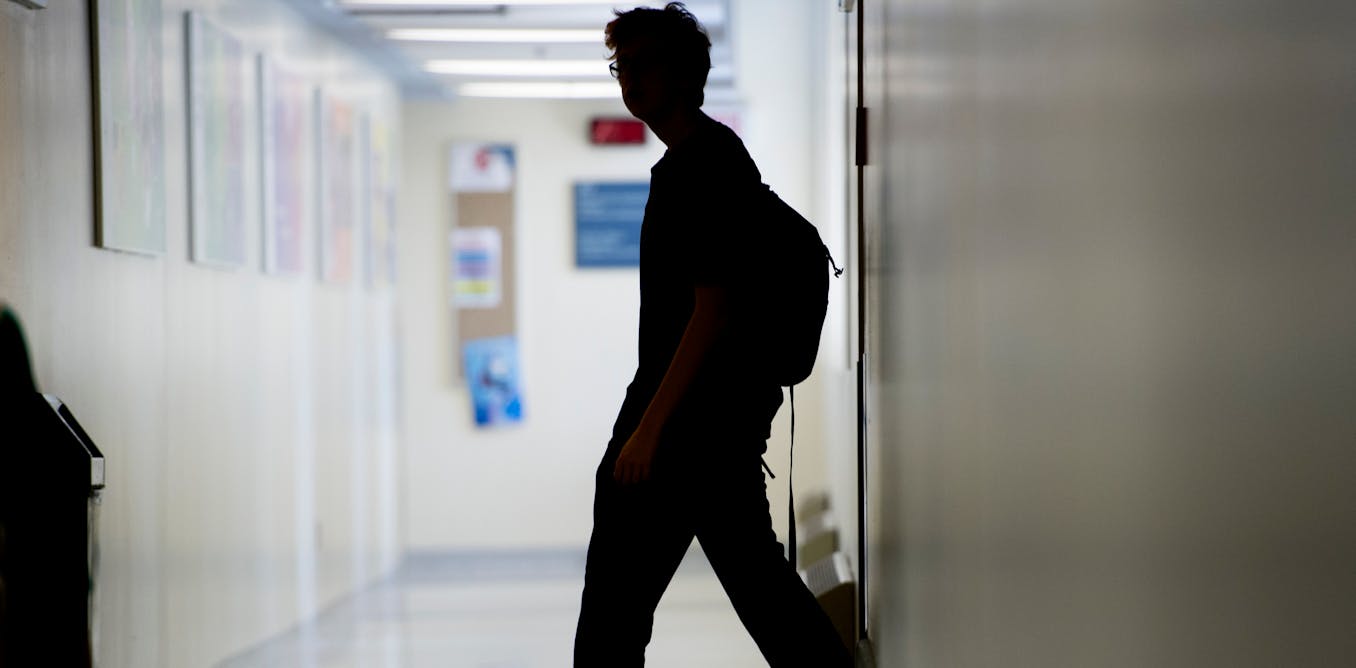Following an emergency meeting of the National Cabinet this week, Prime Minister Anthony Albanese has announced a raft of measures to tackle the problem of gender-based violence.
Among these is a program to help women leave their abusive partners, an “age assurance” trial to prevent children accessing pornography and other age-inappropriate material, and a “counter-influencer” program to tackle extreme misogynistic online content.
The latter is a relatively new measure when it comes to curbing Australia’s gender-based violence problem. According to Albanese, it will:
specifically include a counter-influencing campaign in online spaces where violent and misogynistic content thrives, to directly challenge the material in the spaces it’s being viewed.
Research shows technology-facilitated abuse is both prevalent and pernicious. But what do we know about the specific impacts of being exposed to misogynistic content online? And is an online solution the best way to address the problem?
Attitudes and behaviours
According to the latest Personal Safety Survey:
- 1 in 4 Australian women have experienced violence by an intimate partner or family member since the age of 15, compared with 1 in 8 men
- 1 in 5 women have experienced sexual violence since the age of 15, compared with 1 in 16 men
- 1 in 5 women have experienced stalking since the age of 15, compared with 1 in 15 men.
These statistics, alongside the tragic deaths of too many women by their intimate partners or ex-partners, demonstrate that addressing men’s violence against women (as well as other at-risk groups) must be a national priority – and everyone’s responsibility.
The causes of gender-based violence are complex and multifaceted and experts recognise there is no one cause. A key driver is problematic attitudes, beliefs and norms. According to Our Watch, these include attitudes that condone violence against women, support for rigid gender roles, tolerance of disrespect and aggression towards women, and limitations placed on women’s economic freedom and decision-making.
In addition to attitudes, risk factors for gender-based violence may include adverse childhood experiences, previous exposure to family violence, alcohol or drug abuse, mental health issues, poverty and unemployment.
Exposure to online content
There’s long been debate about the impacts of watching pornography, especially violent pornography. Recent Australian research found the average age of first exposure to porn is 13.2 years for boys and 14.1 years for girls.
In the United Kingdom, researchers found 1 in 8 titles on mainstream porn sites “describe acts that would fall under the most widely used policy definition of sexual violence”. But they also acknowledge the impacts of porn on sexist attitudes and behaviours remains unclear.
Some experts warn against blaming porn and suggest we should cast a wider net when examining problematic societal attitudes towards sex, gender and bodies. Discussions have turned to other parts of the internet, and in particular to the “manosphere”.
One recent study focused on Australian schools found a resurgence in boys’ sexist behaviours towards women teachers and girl peers. The authors argue “manfluencers”, especially Andrew Tate, are the key drivers of this.
The Centre for Countering Digital Hate identified more than 100 TikTok accounts that were frequently promoting Tate’s content in 2022. These accounts had some 5.7 million followers and 250 million views. Some of the content included statements along the lines of “women should take some degree of responsibility for rape” and “virgins are the only acceptable thing to marry”.
After this week’s meeting, Minister for Social Services Amanda Rishworth said platforms have a role to play in countering the spread of harmful content:
They have a fundamental responsibility to step up and do more. The content that digital platforms service through algorithms and systems, particularly to young Australians, has an impact in reinforcing harmful and outdated gender norms.
AP/Dean Lewins
But one major concern is platforms themselves are recommending this content to users. Algorithmic recommendation systems, such as YouTube’s “up next” feature and TikTok’s “for you” page, are integral to increasing engagement and maximising advertising revenue. Influencers such as Tate can generate millions of dollars in revenue from platforms. This may result in commercial interests being prioritised over responsibility and user safety.
We all have a role to play
Details about the government’s proposed counter-influencer program are yet to be revealed. Albanese said the campaign
[…] is intended to counter the corrosive influence of online content targeted at young adults that condones violence against women. It will raise awareness about a proliferation of misogynistic influencers and content, and encourage conversations within families about the damaging impact of the material.
There’s no quick fix to addressing the problem of gender-based violence, but respectful relationships education should be the priority. Our focus should be on implementing best-practice measures to prevent both online and offline violence from occurring in the first place.
Research shows school-based and university-based respectful relationship training can create lasting attitude and behavioural changes. Such training includes teaching people, especially men, to deal with romantic rejection.
One example is Victoria’s Respectful Relationships education program. This is a form of primary prevention that aims to embed cultures of respect and gender equality across schools.
Social media isn’t the cause of men’s violence against women. The manosphere and its extreme misogyny “didn’t manifest spontaneously”. It’s not new but a product of our society. It just happens there’s more visibility to these voices, which are now being amplified by technology.
It’s also not helpful to discuss the growth of Tate and his ilk without also considering the loneliness crisis, which young people – and particularly young men – face disproportionately.
To achieve change, we need to counter problematic attitudes and address gender inequality in everyday life.
We need better resources for parents and caregivers, and more research on the perpetrators and supporters of violence against women. Important discussions can start once we understand why young men with problematic attitudes became that way.
If this article has raised issues for you, or if you’re concerned about someone you know, call 1800RESPECT on 1800 737 732 or visit the eSafety Commissioner’s website for helpful online safety resources. If in immediate danger, call 000.







